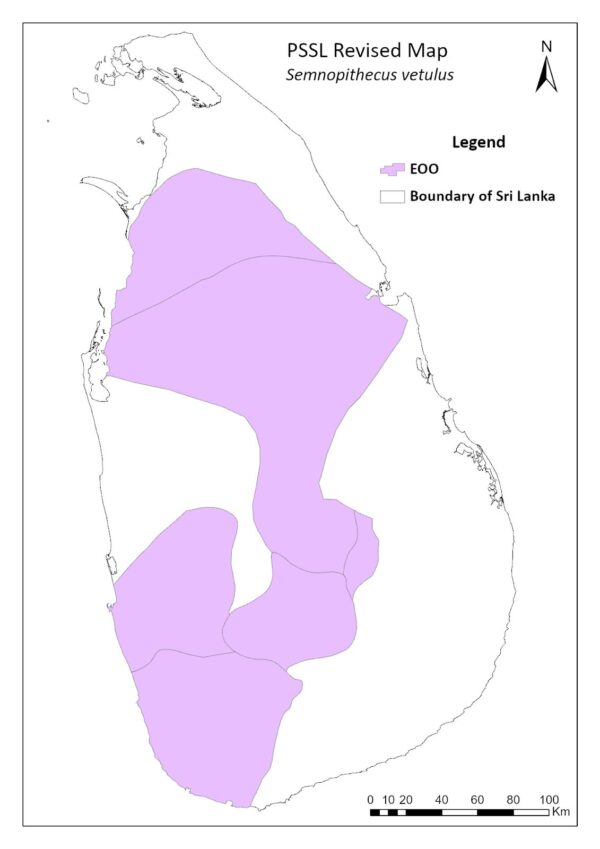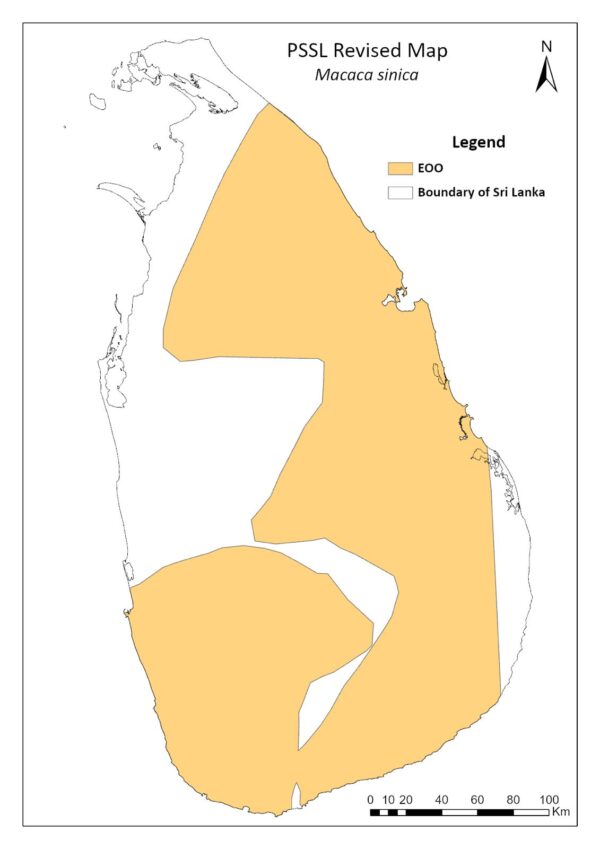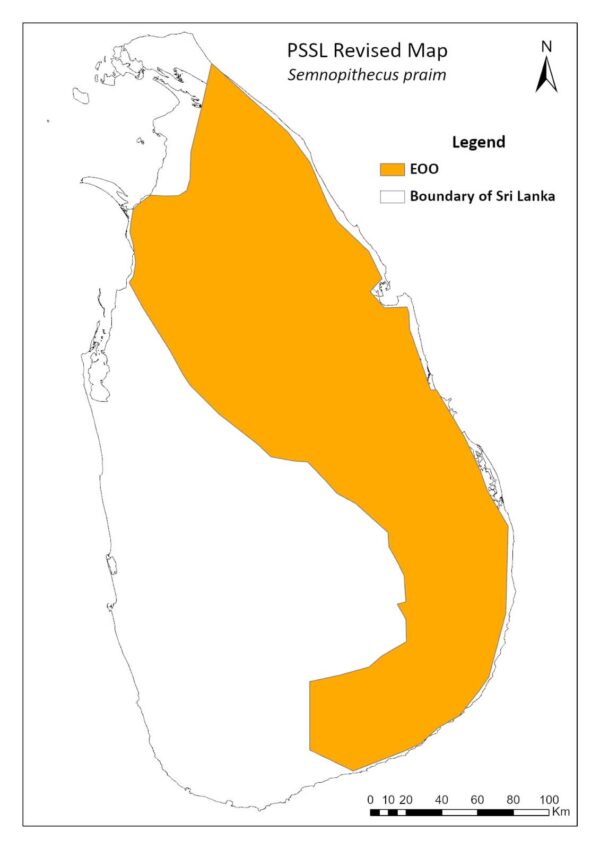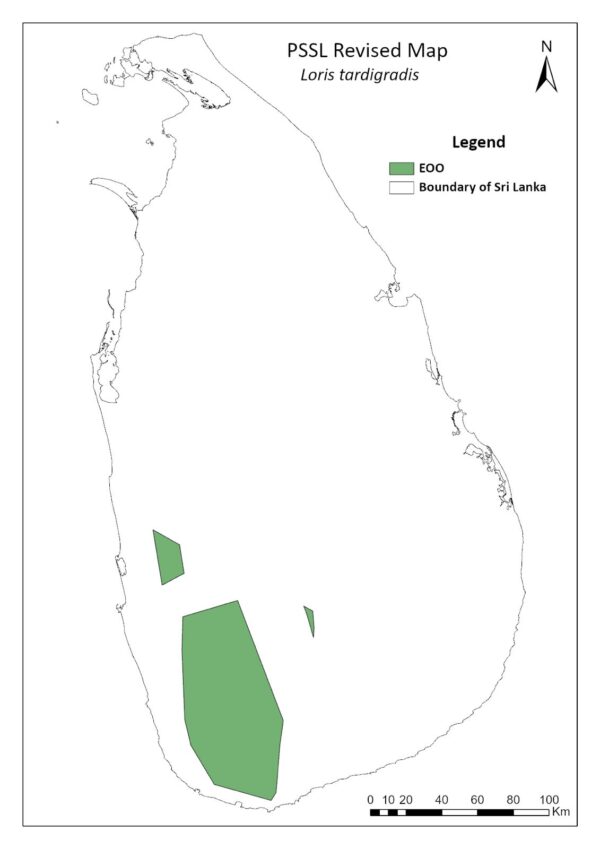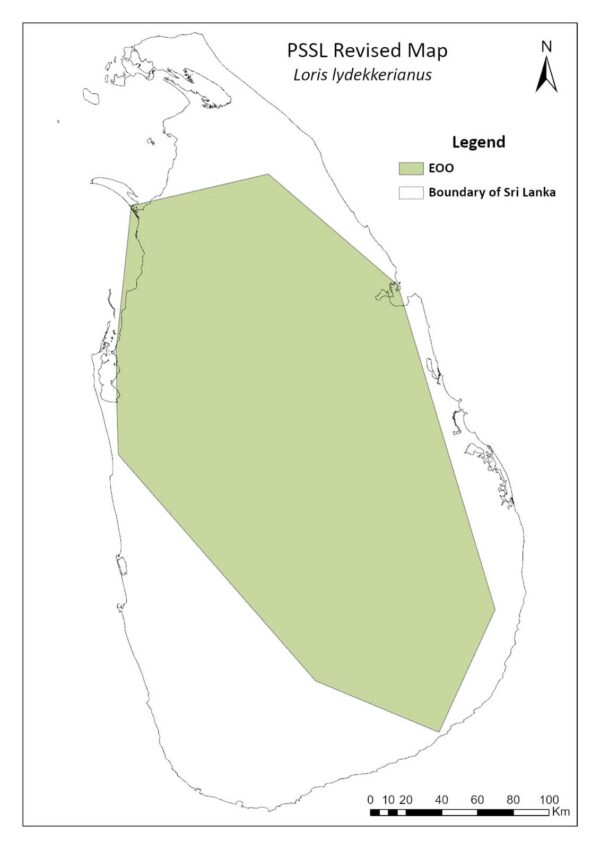PRIMATES OF SRI LANKA
Non-human primates are our closest relatives in the living world, but they are threatened the world over, mostly by anthropogenic activities by
another primate: Homo sapiens – us humans ! Sri Lanka has five species of primates, three of which are endemic
Also refer All the world’s primates, Available from:
https://www.alltheworldsprimates.org/Home.aspx [ 10/18/2019].
The purple-faced langur of Sri Lanka (Semnopithecus vetulus) – ENDEMIC
This langur is endemic to Sri Lanka and is listed as Endangered by IUCN. It has five
subspecies as recognised in All the World’s Primates (Rowe and Myers, 2016), the most
comprehensive account of primates in the world to date. Believed to be named as purplefaced langurs due to its “dark purplish black face with a chin framed by white whiskers”. The crown hair is directed backwards and brownish in hue, but this varies among the subspecies. The coat colour also varied among the sub-species from black to browny grey to leaden grey. Most sub-species have a rump patch, but is insignificant or absent in some. The tail is long and grey, with or without ending in a white tip or tuft. Females have a white pubic patch on the inside of the upper thighs.
Threat status: This species is listed as Endangered both in the global as well as national
threatened species listings.

Semnopithecus vetulus vetulus – The Southern purple-faced langur

Semnopithecus vetulus nestor – The western purple-faced langur
This is the smallest of the sub-species, with a leaden grey coat, distinct ashy grey rump patch, and buff coloured head hair.
Critically Endangered (Globally), and recognised as among the most threatened 25 primates in the world (Dela and Rowe, 2005). This is due to paucity of forests in its geographic range and loss of home gardens (its most important habitat) in recent years.

Semnopithecus vetulus philbricki - The northern purple-faced langur

Semnopithecus vetulus monticola

Semnopithecus vetulus harti -Hart’s purplefaced langur
Semnopithecus vetulus vetulus


The toque macaque (Macaca sinica)
“Lorem ipsum dolor sit amet, consectetur adipiscing elit, sed do eiusmod tempor incididunt ut labore et dolore magna aliqua. Ut enim ad minim veniam, quis nostrud exercitation ullamco laboris nisi ut aliquip ex ea commodo consequat. Duis aute irure dolor in reprehenderit in voluptate velit esse cillum dolore eu fugiat nulla pariatur. Excepteur sint occaecat cupidatat non proident, sunt in culpa qui officia deserunt mollit anim id est laborum.”
Note: The subspecies threat status have not been published nationally, but IUCN has provided their global threat status)
Macaca sinica sinica
Macaca sinica aurifrons
Macaca sinica opisthomelas


Loris tardigradus nycticeboides

Loris tardigradus tardigradus
Endangered (Globally)

Loris tardigradus parvus

Loris lydekkerianus grandis

Loris lydekkerianus nordicus

Loris lydekkerianus

POST A QUESTION IF YOU NEED CLARIFICATION ON PRIMATES – CONTACT US:

